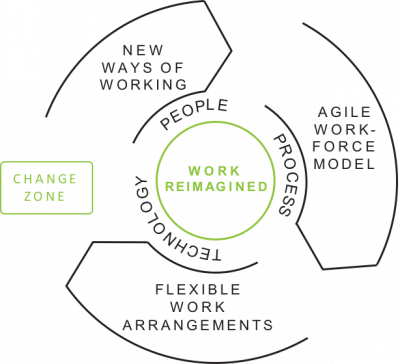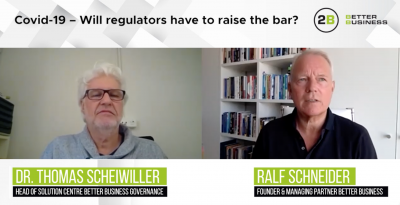Seven initial steps for HR to help business navigate the COVID-19 Crisis
by Sayed Sadjady
by Sayed Sadjady
 The new ways of working
The new ways of workingOver the past decade, many organizations have focused on defining their credo and more specifically their "Purpose" and have successfully put society and employees at the heart of their mission. Now with Covid-19 potentially affecting every individual and organization on the planet, these corporate doctrines are being put to the test.
Scientists and economists are constantly updating their models to estimate the full impact of Covid-19 in the months and quarters ahead. In the meantime, most governments and organizations have decided to consider the worst-case scenarios for now and have formulated their responses accordingly.
Over the past 2 months, business leaders and HR have worked closely to put in place tactical contingency plans and short-term policies to safeguard the health of their workforce and maintain business continuity for what was considered to be a very temporary event. Now we have moved from disruption to full stage crisis, and for certain industries, many parts of the ecosystem that organizations operate within are frozen, threatening to make 2020 the year of survival.
In the coming weeks and months, HR will continue to have a critical role in helping leadership navigate these unchartered waters to come through on the other side. Here is an initial list of key action steps for HR to consider.
1. Two-way candid and open communications:
During crises, TRUST is the chief currency. This applies, not only to governments and public institutions, but also private companies who must balance their business objectives with the welfare of their workforce and their families.
All large companies have already established their Covid-19 taskforces. HR needs to drive or be an integral part of the central communication taskforce that provides updates, guidelines and instructions on a frequent basis. Many have set-up specific Covid-19 websites on their corporate portal to keep employees up to date with developments and provide them knowledge tools and aids. This can itself be a complex process for large MNCs since Covid-19's evolution and public health response can vary so significantly between different jurisdictions and governments. In Europe, the 5 major economies have adopted very different work-order rules and in the United States, differences are emerging between States on what they consider essential to slow down the spread of the virus.
2. Reprioritize the HR annual calendar
2020 will not be a normal performance year, for the vast majority of industries, growth is turning into contraction, requiring HR to think through the workforce plans and hiring goals. HR should rank prioritize its key processes and delay or postpone non-mission critical tasks in order to free up capacity to deal with the situation. In 2009, many US professional services firms delayed their entry level hires and internships by 6-12 months but equally worked hard not to lose their top candidates.
3. Mobilize leaders at multiple levels
Define clear rules of engagement and good practices for your leaders. Keep them focused on a few central themes and help them reinforce the message regularly. Outreach will be important in the coming weeks and months… “No-one left behind”. Encourage team leaders and managers to dedicate part of their virtual team meeting to focus on the human dimension. But equally, leaders should keep everyone focused on the mission and the longer-term goals, reassuring folks on what is on the other side of the recovery.
4. Be ready to redeploy employees from non-essential roles to critical tasks
Many projects and initiatives will be frozen, freeing new resources to help leadership drive different aspects of the new working model. HR can be a critical enabler to facilitate this effort.
5. Pay attention to frontline workers
Sales and business development activities have slowed down substantially in recent weeks, leaving frontline employees, in particular the sales force extremely anxious. They need different guidelines on how to connect with their customers and other vendors. When normality returns, these groups will be critical to regenerate the lost demand.
6. Look out for early signs of prolonged isolation and "cabin-fever" in employees
Even those who will choose to, or have to visit their place of work every day during this interim period, will come to sense the full impact of social distancing, with the risk of leading to social disengagement instead.
7. Think total workforce, not just payroll employees
Independent contractors and freelancers constitute a sizeable portion of the workforce. It is a natural reaction to suspend these relationships in order to manage through the storm. However, a rapid recovery from Covid-19 crisis will depend on businesses being able to re-activate their entire workforce. HR should work with managers across the business to pay attention to this demographic and, at a minimum, maintain connectivity. This is the most at-risk segment of the workforce.
About the Author:
Sayed is an experienced transformation and consulting leader with a track record of building and managing Transformation and Human Capital practices. He provides consulting and facilitation services for boards and senior executives on business turnarounds, M&A, workforce management; leadership and culture; and transformation of functional operating models.




















